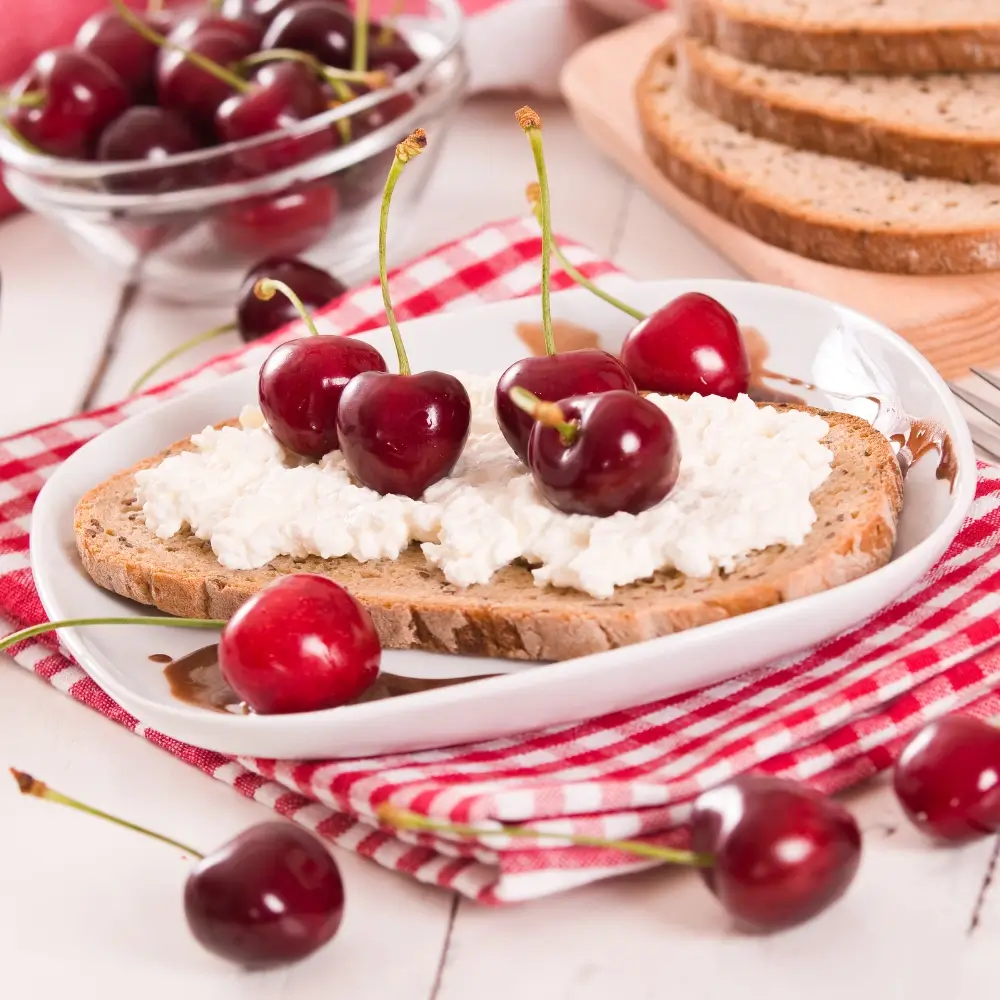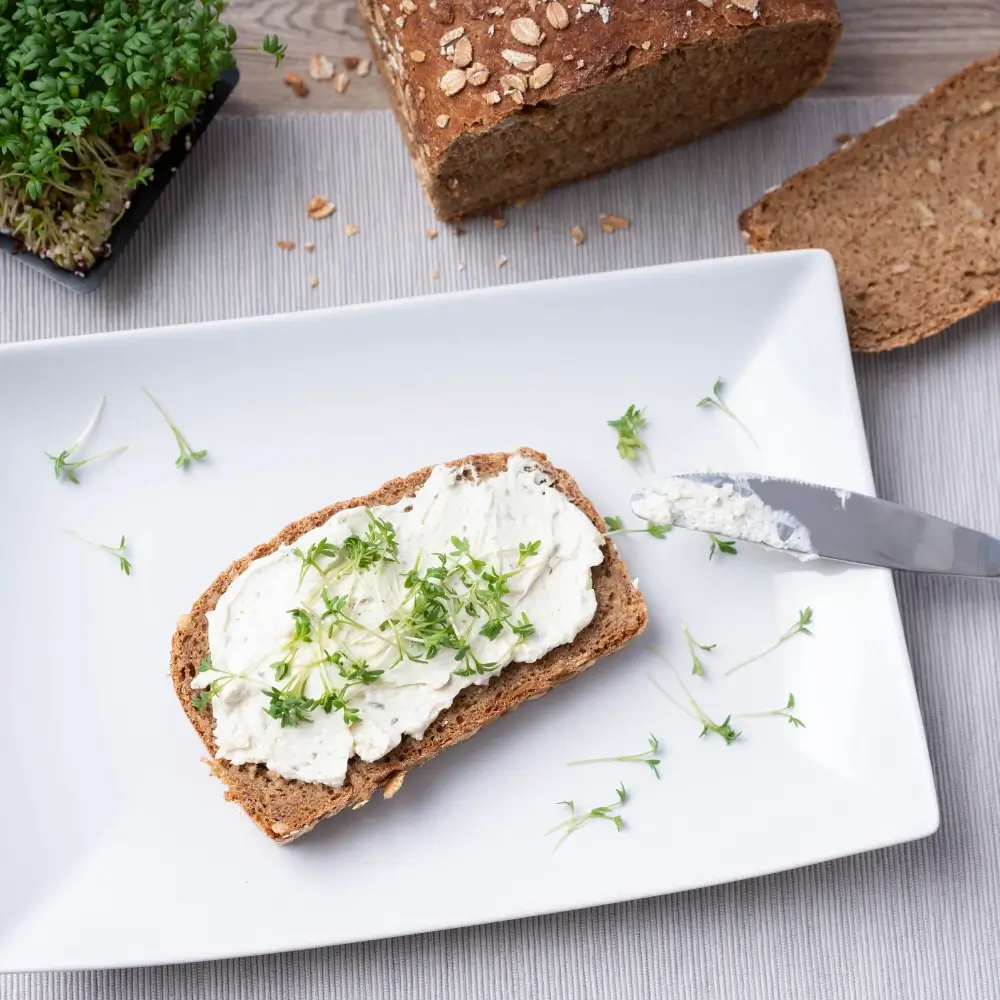Cottage Cheese Bread Recipe
Easy Homemade Cottage Cheese Bread
Have you ever wondered how to create a delicious, high-protein bread that’s perfect for any meal without spending hours in the kitchen? Look no further! This homemade cottage cheese bread recipe is here to transform your breakfast, lunch, or snack routine with its simplicity and flavor.
Made with just a few common ingredients like full-fat cottage cheese, eggs, and basic pantry staples, this bread is a game-changer. The best part? It’s incredibly easy to prepare using a food processor and standard kitchen tools. Each slice is packed with protein and a delightful flavor that will keep you coming back for more.
In this article, we’ll guide you through every step, from selecting the right ingredients to slicing your freshly baked loaf. Whether you’re a busy parent, a fitness enthusiast, or just someone who loves homemade treats, this recipe is designed to fit seamlessly into your lifestyle.
Key Takeaways
- A simple, high-protein bread recipe perfect for any meal.
- Made with common ingredients like cottage cheese and eggs.
- Easy to prepare using a food processor and basic kitchen tools.
- Perfect for breakfast, lunch, or snacks.
- Detailed step-by-step guide from ingredients to slicing.
Table of Contents

Introduction to Easy Homemade Cottage Cheese Bread
Imagine the warmth of freshly baked bread filling your kitchen, made possible with minimal effort and time. This easy homemade cottage cheese bread is a delightful treat that combines the creaminess of cottage cheese with the richness of eggs, creating a flavor profile that’s both tangy and satisfying.
Why You’ll Love This Recipe
You’ll love this recipe for its simplicity and the delicious results it yields. The combination of cottage cheese and eggs creates a moist texture and a subtle tang that makes each bite enjoyable. Here are just a few reasons why this recipe stands out:
- Quick preparation: The batter comes together in minutes using a food processor.
- Flavor versatility: Enjoy it plain, toasted, or paired with your favorite toppings like cream cheese or honey.
- Nutritional benefits: High in protein and low in carbs, making it a great option for health-conscious bakers.
The Benefits of Making Your Own Bread
Making your own bread offers numerous advantages. Not only do you have control over the ingredients, ensuring that each loaf is made with wholesome products, but the process itself can be incredibly rewarding. There’s a unique satisfaction in creating something from scratch that nourishes both body and soul.
“Homemade bread is more than just food; it’s a symbol of comfort and care.”
Additionally, homemade bread allows you to cater to specific dietary needs and preferences, whether it’s reducing carbs or increasing protein content. The process is also a great way to spend quality time in the kitchen, teaching others or simply enjoying some personal time.
The Cottage Cheese Bread Recipe: A Detailed Guide
Creating a delicious homemade bread doesn’t have to be complicated. This section will walk you through the essential ingredients and tools needed to make the perfect cottage cheese bread.
Essential Ingredients and Their Roles
- Full-Fat Cottage Cheese: This is the star of the recipe, providing moisture and a boost of protein. Ensure it’s strained well to avoid excess liquid, which can affect the bread’s texture.
- Eggs: Acting as a binding agent, eggs hold the ingredients together, ensuring the bread doesn’t crumble.
- Flour: Adds structure and texture, making the bread light and fluffy.
- Baking Powder: Essential for leavening, helping the bread rise beautifully.
- Salt: Balances the flavors, enhancing the overall taste without making it salty.
Tools You Need for Effortless Baking
- Food Processor: Blends ingredients smoothly, especially the oats, ensuring a fine consistency.
- Large Bowl: Mixes wet and dry ingredients thoroughly.
- Loaf Pan (9×5-inch): Shapes the bread perfectly and ensures even baking.
With these ingredients and tools, you’re ready to create a delicious, high-protein bread that’s perfect for any meal. The precise measurements and tools ensure a consistent result every time.

Step-by-Step Preparation and Baking Process
Creating delicious homemade bread can be a breeze when you follow the right steps. This section will guide you through each phase, from mixing ingredients to baking and cooling, ensuring your loaf turns out perfect every time.
Blending Ingredients for a Smooth Batter
Start by blending strained cottage cheese, eggs, oats, and other dry ingredients in a food processor. Pulse until the mixture is smooth but not overmixed. This ensures a light texture and even distribution of flavors.
- Combine cottage cheese, eggs, and oats in a processor.
- Pulse until smooth to avoid overmixing.
Perfecting the Baking Time and Temperature
Preheat your oven to 350°F. Grease a 9×5-inch loaf pan and pour in the batter. Bake for about 60 minutes, checking with a toothpick—it should come out clean when done.
- Preheat oven to 350°F.
- Pour batter into a greased loaf pan.
- Bake until a toothpick comes out clean.
Cooling and Slicing for Best Texture
Let the loaf cool on a rack for 30 minutes before slicing. This step is crucial for maintaining the bread’s texture and preventing sogginess.
- Cool on a rack for 30 minutes.
- Slice carefully to preserve structure.
By following these steps, you’ll achieve a delicious, high-protein loaf perfect for any meal. Proper handling at each stage ensures a light, flavorful texture that’s hard to resist.
Customized Variations for Your Cottage Cheese Bread
Now that you’ve mastered the base recipe, it’s time to get creative! Customizing your cottage cheese bread allows you to explore a variety of flavors and textures, making each loaf unique. Whether you prefer savory or sweet, there are countless ways to tweak the recipe to suit your taste.
Exploring Savory and Sweet Twists
Add some herbs like rosemary or chives for a savory twist, or try cinnamon for a sweeter version. You can also mix in seeds like sunflower or chia for added crunch and nutrition.
Incorporating Seeds, Herbs, and Additional Flavors
For a savory option, garlic and rosemary make a great combination. On the sweeter side, a drizzle of honey or a sprinkle of cinnamon can transform the bread into a delicious treat. Experiment with different ingredients to find your favorite flavor combinations.
| Ingredient | Usage | Effect |
|---|---|---|
| Quick Oats | Replace rolled oats for a finer texture | Softer texture |
| Almond Flour | Substitute for up to 50% of flour | Low-carb option |
| Egg Whites | Mix with whole eggs | Higher protein content |
| Herbs (Rosemary, Chives) | Add 1-2 tablespoons chopped | Savory flavor |
| Seeds (Sunflower, Chia) | Mix in 1/4 cup | Crunchy texture |
| Cinnamon | Sprinkle on top | Sweet flavor |
These variations not only enhance the flavor but also boost the nutritional profile of your bread. Whether you’re aiming for a keto-friendly option or just want to mix things up, experimenting with these ingredients will keep your cottage cheese bread exciting and delicious every time.
Nutritional Insights and Health Benefits
Making your own bread offers more than just great taste—it provides a healthy, nutrient-dense option for your meals. This homemade cottage cheese bread is packed with protein and low in carbs, making it an excellent choice for fitness enthusiasts and health-conscious individuals alike.
High Protein, Low Carb, and Other Nutritional Perks
Each slice of this bread contains about 10 grams of protein, making it a great option for those looking to increase their protein intake. The combination of cottage cheese and eggs ensures a balanced mix of protein and healthy fats, while keeping carbohydrates relatively low compared to traditional bread.
- High in protein: Each slice provides approximately 10 grams of protein, ideal for muscle maintenance and growth.
- Low in carbs: With fewer carbohydrates than store-bought bread, this recipe supports low-carb diets and fitness goals.
- Natural ingredients: Full-fat cottage cheese and eggs contribute to a richer flavor and balanced nutrition.
The use of natural ingredients like full-fat cottage cheese and eggs not only enhances the flavor but also provides essential vitamins and minerals such as calcium and iron. This bread is a heart-healthy choice, supporting overall well-being and dietary preferences.
“Homemade bread made with nutrient-dense ingredients like cottage cheese and eggs is a delicious way to support your health and fitness goals.”
By choosing this high-protein, low-carb bread, you’re opting for a nutritious alternative that aligns with a healthy lifestyle. Whether you’re managing dietary restrictions or simply looking for a more wholesome option, this recipe is a perfect fit.

Troubleshooting Common Baking Issues
Even with the simplest recipes, baking can sometimes go awry. Whether your loaf turns out dense or fails to rise properly, identifying the root cause is key to achieving the perfect bake. Let’s explore common issues and how to resolve them.
Preventing Dense or Overmixed Dough
A dense texture is often due to overmixing the batter. When ingredients are overmixed, the dough becomes tough, leading to a heavy loaf. To avoid this, mix wet and dry ingredients separately and gently fold them together until just combined. Avoid over-blending in the food processor, as this can overdevelop the gluten, making the bread dense.
Tips for Ensuring Proper Rising
If your bread isn’t rising as expected, check your leavening agents. Ensure your baking powder is fresh, as expired powder won’t activate. Also, confirm that your oven temperature is accurate—a lower temperature can slow rising. Let the dough rest in a warm, draft-free area to encourage activation. If using yeast, make sure it’s active by testing it in warm water before mixing.
- Check dough texture; it should be smooth but not sticky.
- Ensure all leavening agents are fresh and correctly measured.
- Use a food processor wisely to avoid overmixing.
By addressing these common issues, you can refine your baking technique and consistently produce a light, flavorful loaf. Remember, precise measurements and gentle mixing are your keys to success.
Serving Suggestions and Storage Advice
Now that your homemade bread is ready, it’s time to enjoy it! Whether you prefer it warm, toasted, or as a base for your favorite dishes, this high-protein bread offers endless possibilities. Let’s explore some creative ways to serve it and tips for keeping it fresh.
Creative Ways to Enjoy Your Loaf
Start by slicing your bread evenly using a sharp knife. Serve it warm with a layer of cream cheese or a drizzle of honey for a sweet treat. For a savory option, try pairing it with turkey ham or avocado. The bread’s hearty texture makes it a perfect base for sandwiches or a crunchy crouton in soups.
When it comes to storage, let your loaf cool completely before placing it in an airtight container. Store it at room temperature for up to 7 days or in the fridge for up to 2 weeks. For longer storage, wrap it tightly in plastic wrap or aluminum foil and freeze for up to 3 months. To maintain freshness, slice the bread just before serving and store any leftovers properly.
To reheat, simply place slices in the microwave for 20-second increments or warm them in a preheated oven at 350°F for a few minutes. This will revive the bread’s fresh-baked taste and texture.
“This homemade bread is more than just a meal—it’s a canvas for your creativity, offering a delicious and healthy start to your day or a satisfying end to your evening.”
By following these tips, you can enjoy your homemade bread at its best, whether it’s fresh from the oven or reheated later. The key is to store it properly and get creative with how you serve it. Happy baking!

Conclusion
With this simple guide, you’re ready to create a delicious, high-protein loaf that’s perfect for any meal. From mixing ingredients to baking and storing, this bread recipe offers a straightforward process that ensures success every time. Packed with protein and low in carbs, each slice provides a nutritious option for health-conscious individuals.
Feel confident in experimenting with various flavors, whether sweet or savory, to tailor the recipe to your taste. Your homemade loaf can be enjoyed fresh, toasted, or as a base for your favorite dishes, offering endless possibilities for any occasion.
Share your baking success with others by leaving a comment, rating, or posting on social media. Let this high-protein, customizable bread become a staple in your kitchen, bringing joy and nourishment to your meals.

Cottage Cheese Bread Recipe
Ingredients
- 2 cups all-purpose flour
- 1 tablespoon baking powder
- ½ teaspoon baking soda
- ½ teaspoon salt
- 1 teaspoon sugar
- 2 large eggs
- 1 cup cottage cheese (drained)
- ¼ cup milk
- ¼ cup melted butter
- 1 tablespoon lemon juice (optional, for extra flavor)
Instructions
- Preheat the oven to 350°F (175°C). Grease or line a 9×5-inch loaf pan with parchment paper.
- In a medium bowl, whisk together the flour, baking powder, baking soda, salt, and sugar.
- In another bowl, beat the eggs, cottage cheese, milk, melted butter, and lemon juice (if using) until smooth.
- Gradually combine the wet ingredients with the dry ingredients, stirring until just incorporated. Be careful not to overmix.
- Pour the batter into the prepared loaf pan, smoothing the top with a spatula.
- Bake for 35-40 minutes or until the top is golden brown and a toothpick inserted into the center comes out clean.
- Let the bread cool in the pan for 10 minutes before transferring it to a wire rack to cool completely.
- Slice and serve as desired. Enjoy.
Notes
FAQ
Why is full-fat cottage cheese important for this bread?
Full-fat cottage cheese provides a richer texture and better moisture compared to low-fat versions, making the bread more tender and flavorful.
Can I substitute almond flour with another flour?
Yes, you can use other flours like oat or whole wheat flour, but note that almond flour adds a nutty flavor and a finer texture that other flours may not match.
How do I know when the bread is fully baked?
The bread is done when a toothpick inserted into the center comes out clean, and the top is golden brown. This should take about 40-45 minutes in a preheated oven.
Can I add seeds or herbs to the dough?
Absolutely! Chia seeds, flaxseeds, or herbs like rosemary can enhance the flavor and texture. Mix them into the batter before pouring into the loaf pan.
How should I store the bread to keep it fresh?
Store the bread in an airtight container at room temperature for up to 3 days. For longer storage, slice the bread, place it in a freezer-safe bag, and freeze for up to 2 months.






